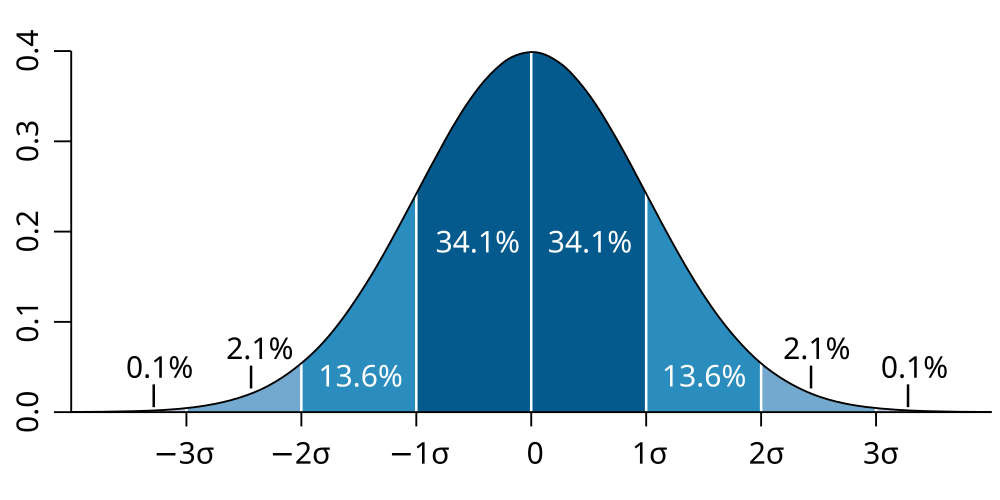
Caption: The Gaussian distribution (AKA the normal distribution, AKA the bell curve).
Features:
- A probability distribution
describes the statistical frequency
of some variable
that forms a statistical population
- The Gaussian distribution
is a particular probability distribution
that applies approximately to many
physical systems and
other kinds of system, and exactly to a few.
There are good reasons why it has wide application---but we won't go into that here.
- The Gaussian distribution
is characterized by two parameters:
the mean (often given the
symbol
Greek lower-case letter μ
(pronounced mu)
and the standard devation.
- A standard devation
(given the symbol
Greek lower-case letter
σ
(pronounced sigma and
often just called sigma) of
probability distribution
is a standard measure of the width of the
probability distribution.
For the Gaussian distribution, ∼ 68 % of the population is within one σ of the mean, ∼ 95 % of the population is within 2σ of the mean, and ∼ 99.7 % of the population is within 3σ of the mean.
- The grades
of a class
of Gaussian distribution.
Thus, the fitted Gaussian distribution
can be used to assign
letter grades automatically.
How is this done?
The instructor calculates the μ and σ for the actual class. Then for example, the instructor decides that he/she wants about 16 % of the class to have A's. From the curve in the diagram, the instructor knows that about 16 % of the Gaussian distribution, there won't be exactly 16 % A's assigned, but usually the number will be close to 16 %.
Image link: Wikipedia.
Local file: local link: gaussian.html.
File: Statistics file: gaussian.html.